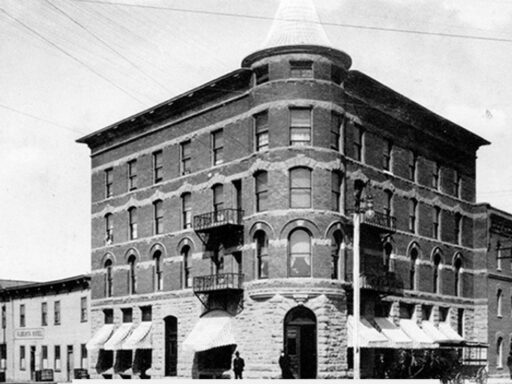Santa’s elves originate from Northern European folklore, particularly the traditions surrounding supernatural beings such as elves, fairies, and hidden folk. They are depicted as short rather than tall like the elves in most fantasy fiction due to regional variations in folklore where small, household-helper elves were common, especially in Scandinavian and British legends.

The idea of elves in Northern Europe is diverse. These beings vary drastically in size and shape depending on local traditions. In some areas such as Norway, Sweden, and Wales, fairies and elves are described at human size. Elsewhere, including parts of southwest Britain, Denmark, and Ireland, they are often very small, which aligns more closely with the modern image of Santa’s elves.
Folklore allows these beings to change size. They may appear human-sized to interact with people but can also be tiny or even giant. This fluidity in size means there was no fixed image, but the concept of small, helpful household elves became dominant in certain cultural strands.

Scandinavian traditions contribute significantly to the modern elf myth. The tomte or nisse, a small, friendly house spirit active during winter solstice, resembles Santa’s elves closely. These spirits were thought to care for homes and barns if treated well, but would react negatively if disrespected or spied on.
These domestic elves formed part of a larger, shared tradition across Northern Europe. Over time, especially in North America, different strands of these legends blended. The result is the iconic image of Santa’s elves: small helpers working in secret to make toys and assist Santa Claus.

Culturally, Santa’s elves carry a moral message. They reinforce respect for household helpers and the idea of kindness during the winter season. People were encouraged to leave treats for them and avoid spying, emphasizing cooperation and goodwill.
| Aspect | Details |
|---|---|
| Origin | Northern European elves/fairies/hidden folk traditions |
| Size Variations | Ranges from small “wee folk” to human size; elves can shape-shift |
| Scandinavian Influence | Tomte/nisse as household helpers at winter solstice, usually small |
| Modern Depiction | Blended Northern European folklore forming the North American Santa’s elves |
| Cultural Role | Promote respect, secrecy, and good treatment of supernatural helpers |
- Santa’s elves stem from Northern European folklore of elves and fairies.
- Elves’ size varies; small household helpers dominate the traditions behind Santa’s elves.
- Scandinavian tomte/nisse, small winter spirits, heavily influenced their depiction.
- North American culture fused these traditions into the modern image of short, helpful elves.
- The elves serve as symbols of respect, kindness, and secrecy in holiday folklore.
What Is the Origin of Santa’s Elves? Why Are They So Short Instead of Tall Like Fantasy Elves?
Santa’s elves come from a tangled web of Northern European folklore, blending tales of fairies, hidden folk, pixies, and household helpers. They are depicted as short largely due to Scandinavian traditions of small, domestic elves like the tomte or nisse, rather than the taller elves found in most fantasy fiction. Now, let’s unwrap that colorful gift and peek inside the box of history, myth, and culture.
Imagine yourself back in Northern Europe, a land full of misty mountains, frosty forests, and age-old legends. Folklore there didn’t have a single story about elves; instead, it had a whole assembly of magical beings—elves, fairies, pixies, hidden folk—varying in size, shape, behavior, and purpose. These creatures have been part of the shared culture across countries like Norway, Sweden, Denmark, Ireland, Britain, and others.
Interestingly, these beings do not fit neatly into one category. In some parts of Northern Europe, elves appear human-sized, standing tall and proud. In other regions, they’re tiny, whispery, and quick, what you might call “wee folk.” What’s even wilder? They are shape-shifters of sorts—able to shift from human size to miniature at will. This flexibility in size and form makes it tricky to pin down a single “elf” image from folklore alone.
So, Where Does the “Short Elf” Santa’s Helper Come From?
The short, jolly elves crowded around Santa today owe much to the Scandinavian traditions of household elves, such as the tomte in Sweden and the nisse in Norway and Denmark. These diminutive creatures were said to live in and around people’s homes—especially barns—and acted as caretakers and helpers.
But beware, humans! The tomte and nisse demanded respect; they didn’t like it when folks spied on them or treated them poorly. In return for kindness—say, leaving out a bowl of porridge or a treat—they were loyal, helpful, and quite protective of the households they tended. These small elves were especially active during the winter solstice, a time deeply connected to ancient celebrations of light and dark, rebirth, and survival.
This image of the short, hardworking, and secretive helper naturally blended into the Santa Claus mythos when European immigrants brought their traditions to North America. By the 19th and early 20th centuries, Santa’s elves appeared as tiny, pointy-hatted workers in workshops at the North Pole, assembling toys and helping the jolly man in red prepare for Christmas Eve.
Why Not the Taller, Slender Fantasy Elves? Why Not Like Tolkien’s Rivendell Crew?
Much of the modern tall-elf imagery we know from fantasy stories traces back to a different regional influence—places like Norway, Sweden, and Wales—where elves tend to be human-sized and slender. Think about Tolkien’s elves. They’re noble, tall, and wise. That resonates with the Northern European tales where elves were closer in size and stature to humans.
In contrast, Santa’s elves are modeled after the smaller “wee folk” variants—friendly household helpers who prefer keeping their distance and managing chores rather than standing as proud warriors or mystical beings. Their size symbolizes approachability and cheerfulness. After all, you want elves busy tinkering away in toy workshops, darting around between presents, rather than grand, ethereal beings gazing mysteriously from mountaintops.
What Does This Mean for Our Modern Christmas Celebrations?
Understanding the origin of Santa’s elves gives us a fresh appreciation of their role. They’re more than just cute cartoon characters. They are the descendants of rich folklore that reminds everyone of respect and kindness—ideas deeply woven into holiday spirit.
Next time you see those small elves working busily behind the scenes, remember: they ask only for a little respect, secrecy, and maybe a cookie or two left out on Christmas Eve. Miss that, and you might just get the silent treatment—or worse, a mischievous prank!
Practical Tips to Honor the Elvish Tradition This Holiday
- Leave out treats: Porridge, cookies, or a small gift for your household helpers is a nice nod to old folklore.
- Avoid spying: Remember the tales warn against sneaking peeks at these secretive creatures—respecting their privacy keeps the magic alive.
- Appreciate the small helpers: Upload that holiday cheer, much like the elves’ spirit, by valuing the little acts that make celebrations joyful.
By blending folklore with fun, and respect with whimsy, Santa’s elves teach us lessons as timeless as the myths they come from.
In a Nutshell: The Story of Santa’s Short Elves
- Origin: Rooted deeply in Northern European folklore, a melting pot of elves, fairies, and hidden folk.
- Size diversity: Folklore elves vary from human-sized to tiny “wee folk” who can shape-shift.
- Scandinavian spirit: Small household helpers like the tomte/nisse inspired the short, domestic elves associated with Santa.
- Blended traditions: Immigrant stories and customs merged into the now-iconic North American depiction of Santa’s elves.
- Behavior: Respect, secrecy, and kindness are hallmarks of their stories and their magic.
Next time you spot those cheeky little elves dancing around the Christmas tree or busy in the workshop, you’re witnessing a centuries-old tradition, shaped by cultures, stories, and celebrations through the ages. And that, dear reader, is pretty magical.




